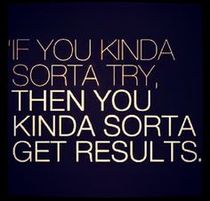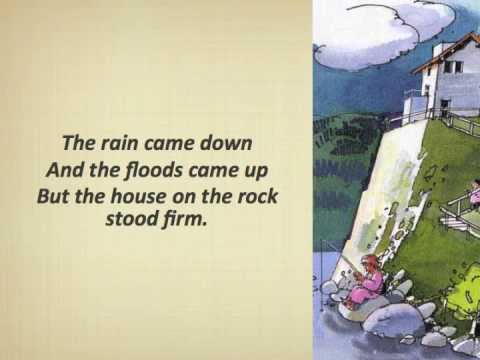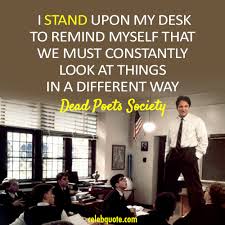 Veteran cats Lean In as the snow falls
Veteran cats Lean In as the snow falls What if we spent the entire year (and beyond) leaning in to whatever we set out to do? How might our relationships improve, our understanding become deeper, and our awareness increase? How much better would our health and fitness be if we leaned in to be more consistent with our healthy eating choices and increase our effort to exercise more? How might the quality and quantity of our work improve if we leaned in to tap the wisdom of colleagues, work smarter, or reflect on performance before planning the next steps? How much better would our attitudes toward each other be if we leaned in to find out a little more about the person or issue we are judging before we make statements or decisions that might not be valid? What if we leaned in every day to simply make a conscious decision to make a difference?
Think of the times you want to hear or see things more clearly. What do you do? You lean in. I’ve been taking my parents to their many appointments in the last few months. I don’t know if I’ve suddenly began to talk more softly or their high priced hearing aids aren’t quite up to snuff, but I find myself leaning in so they can hear a little better. I lean in when I take their hand or arm to steady them when they walk on uneven ground instead of walking at my normal pace which would be 20 feet in front of them. Just as we lean in to hear better or to lend a hand, we also lean in to see better. I love the screen option on my phone where I can “zoom in” and make the print or picture details big enough to see clearly. It suddenly makes things more interesting or informative! The added benefit of leaning in is a little more closeness and personal contact too.
Leaning in means looking into the eyes and seeing the expressions of others. It means having a face to face conversation when the important stuff comes up instead of a text or email. Leaning in increases our personal contact, ownership, and empathy. As a teacher, I would lean in as I spoke to elementary students who were half my height by squatting down to their eye level. In meetings, sitting side by side allows you to lean in more than sitting across the desk which acts as a silent barrier. Even the strategy of proximity to adjust behavior implies that you lean in as you walk toward the situation, not away.
Relationships would be stronger if we would lean in more often. We go about our cram-packed daily schedule and forget about the little things that make relationships thrive. We take for granted our spouses and friends, assuming that they will continue to be there for us or pick up where we left off regardless of whether we make an effort or not. Leaning in requires a determination on our part to do those little things that make others feel appreciated, remembered, and cared for. We may not have time for those long dates or leisurely lunches, but a text, a note, a phone call, or a random hug makes a world of difference to not only the other person but in us too. Lean in on a regular basis and see how that good relationship can become great again.
Like my cats in the picture above, we lean in to stay warm and to calm us in times of crisis. We may snuggle for warmth or comfort under a cozy blanket, or convene a meeting of like minds to resolve a situation. Collaboration is leaning in to set and achieve goals, solve problems, or improve performance in a small group. There is safety in numbers, but there is also comfort. Together we achieve more (TEAM) if we lean in.
Leaning in also makes a difference in the success of change initiatives, events, or the organization itself. Our small local church begins our annual “Souper Bowl” on Sunday. We collect cans of soup and pasta for area food pantries over a 3 week period ending on Super Bowl Sunday. We have a friendly competition with a nearby church and each year collect more and more cans. The excitement and energy of this event arises because everyone leans in – to buy soup, donate money, spread the word, and deliver the soup after it’s all over. We walk our talk to serve others. What if we leaned in like this the entire year for everything we do to serve our mission and community? Could we sustain that enthusiasm and benefit from the increased attendance that comes during this time of year, and ultimately accomplish more?
The Kansas State Department of Education has a new slogan that Kansans Can. It supports the vision and mission that all students can achieve success and be college and career ready. It won’t happen because they made a clever video or have a cute logo. It will happen because all stakeholder groups, educators, and even students, will lean in and do the work to realize this goal. Lean in is not an initiative, but an action.
With any initiative, whether it is at work, school, church, or within the community, the more you lean in, the better the result. When I was in college, I sat on the back row, as far away from the instructor as possible in most classes. The result was what you might imagine. I did OK, but in no way was I leaning in to my coursework. As I got into more difficult, albeit interesting classes, I moved closer to the action. I achieved the best grade in one of the most challenging courses in my undergraduate work because I was in a small class, actively engaged, and spent each day after class reteaching the math part of the content to my friend who just didn’t get it. I was in the thick of things. That lesson helped me later on in my graduate work where I no longer was content to get by. I leaned in to the content, worked diligently with a colleague, and was actively engaged. The result was more than a degree, but a level of satisfaction that was much more rewarding. As a public school teacher in the past and an adjunct instructor and consultant today, I work really hard to help my students/participants lean in and become active learners. Leaning in isn’t something we naturally do in uncertain situations and sometimes takes a little encouragement.
Last of all, leaning in requires you to make an effort and accept responsibility. It’s easy to sit on the outside and make comments or suggestions without really being involved. It’s easy to criticize or judge others when we don’t lean in close enough to get the full context of their situation, opinions, or beliefs. With the political season in high gear, many decisions are being made by those currently in office, and will be made by those running for office. Lean in folks! Be informed on the issues and stances of those you will elect by listening to and learning about all sides of the issues. Most of all, take the time to vote. I can’t believe how few people voted in the last Kansas statewide election and now how many people are complaining about the subsequent decisions that have been made as a result. Lean in or be left out.
So regardless of the resolution you choose to pursue, or the everyday task at hand, lean in. Get close to the action. Make it personal. Invite others. Make a difference with your interest and your effort. Then enjoy the results: improved health, better relationships, successful events, and happier communities. Lean In every day!










 RSS Feed
RSS Feed